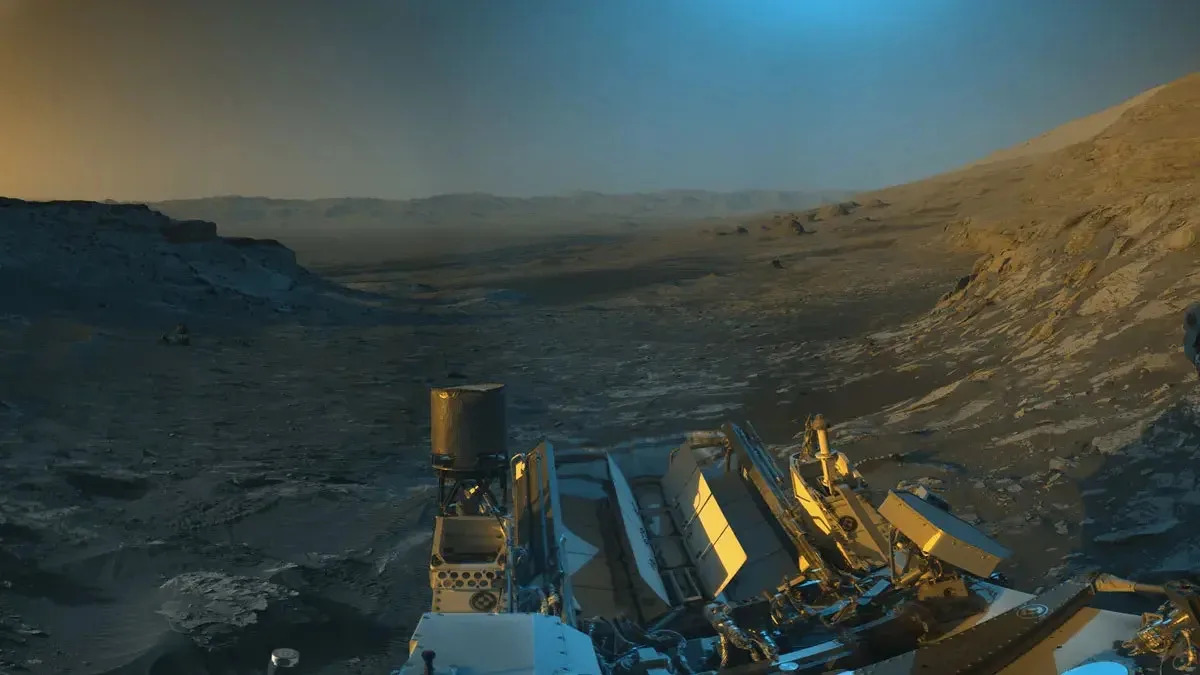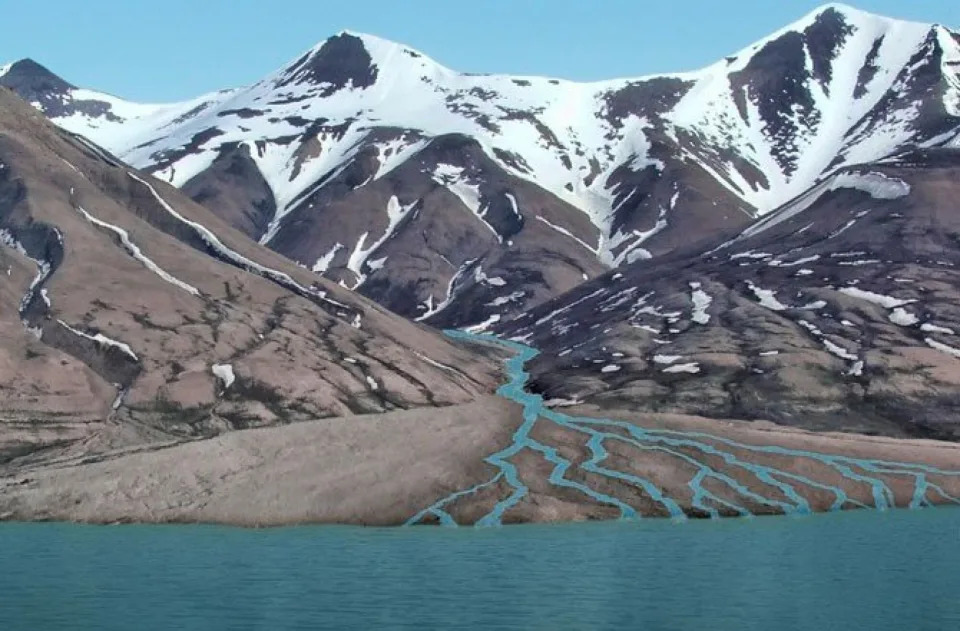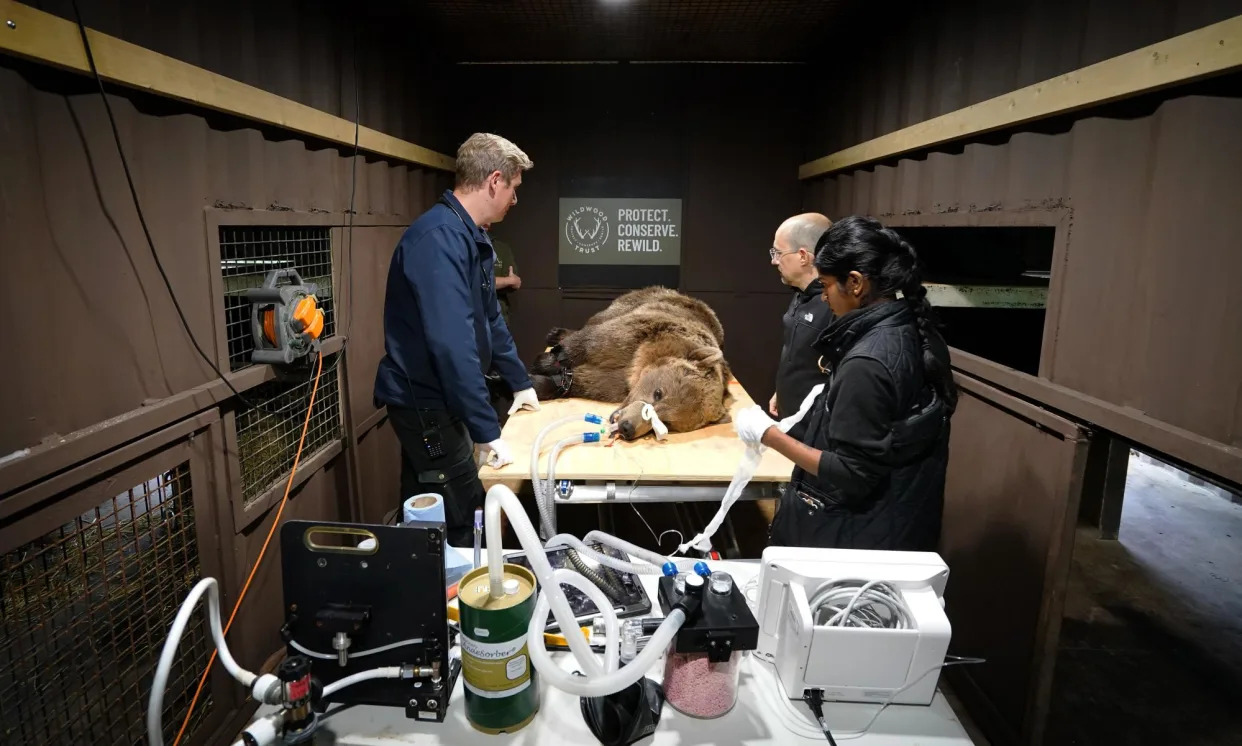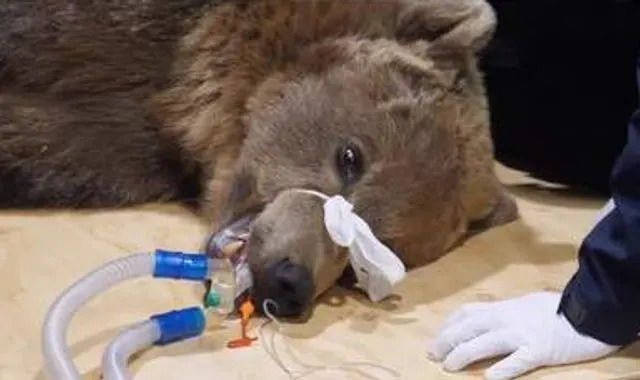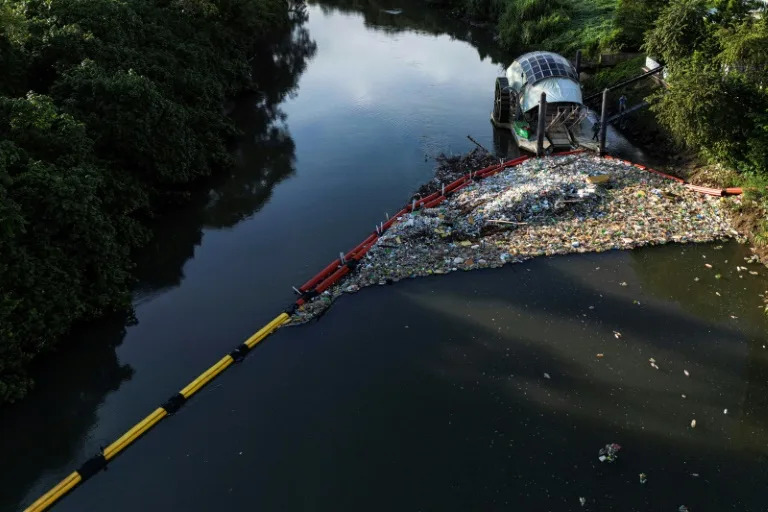Laura Kelly
Thu, October 10, 2024
THE HILL

One year after Hamas’s Oct. 7 attack, Israel is reshaping the Middle East by force, taking the fight to Iran and its proxies with the help of the United States — despite pleas from the Biden administration for diplomacy.
While President Biden is warning Israel against a major attack on Iran in retaliation for a missile barrage last week, Israel’s ambassador to the United States is warning “a long and arduous path” lies ahead.
“Following the carnage of Oct. 7, all our enemies in the region and globally smelled the blood, sensed weakness and vulnerability and rose to hit us,” said Michael Herzog, Israel’s envoy in Washington, during a memorial ceremony Monday at the Israeli Embassy.
“One year on, the story of this war is also of Israel rising to its feet, turning the tide, restoring its deterrence and dismantling the ring of fire that Iran has built around us.”
The Israeli ambassador’s message was delivered in front of national security adviser Jake Sullivan, deputy national security adviser Jon Finer, and White House coordinator for the Middle East Brett McGurk — officials who were blindsided last month when Israeli Prime Minister Benjamin Netanyahu publicly rejected a cease-fire proposal with Hezbollah the White House had coordinated with Jerusalem behind closed doors.
Since then, Israel has forged ahead with its plans to dismantle Hezbollah, weaken Iran and suppress Hamas in the Gaza Strip — largely without consulting the United States beforehand, but relying heavily on military and political support from Washington.
“It must be said, we wouldn’t be where we are today were it not for the steadfast support of our close friend and ally the United States of America,” Herzog told the assembled diplomats, along with members of Congress from both sides of the aisle.
The episode demonstrates how the Israeli government, under Netanyahu, is reframing its war aims toward a vision of long-lasting regional dominance.
“This is our war of existence — ‘the war of redemption.’ This is how I would like the war to be called officially,” Netanyahu said during a Cabinet meeting on Monday.
“We are changing the security reality in our region, for our children and for our future, in order to ensure that what happened on Oct. 7 does not recur. Never again.”
While rocket fire still emanates from the Gaza Strip and Hamas holds 101 hostages it kidnapped from Israel on Oct. 7, the Israeli military has shifted operations to take on the threats from Hezbollah in southern Lebanon.
Israel estimates Hezbollah has fired 9,500 rockets into the country since Oct. 8, 2023, and considers the group its most dangerous, proximate adversary, with a well-stocked, organized and disciplined fighting force.
But the exact goals of Israel’s operations against Hezbollah are not entirely clear. United Nations Security Council Resolution 1701 calls, generally, for the absence of weapons between Israel’s northern border and Lebanon’s Litani River. But Netanyahu, in a speech Tuesday night, called for the Lebanese to “stand up and take their country back” from Hezbollah and its main backer, Iran.
“In the past, when I would talk with Israeli colleagues, they always said that their security establishment, as well as their political establishment, has always believed, what they call ‘the big war’ was going to be inevitable,” said Randa Slim, a senior Fellow and director the Middle East Institute’s Program on Conflict Resolution and Track II Dialogues.
“And the big war was going first after Iranian proxies … and then going after Iran.”
Netanyahu is expected to approve a strike against Iran in retaliation for the Islamic Republic’s Oct. 1 strike against Israel — a barrage of nearly 200 ballistic missiles that were, in turn, launched in retaliation for Israel’s killing of Hezbollah’s leader Hasan Nasrallah in Beirut last month, and the killing of Hamas’s chief political leader Ismael Haniyeh in a guesthouse in Tehran in July.
Israel’s Defense Minister Yoav Gallant on Wednesday said Israel’s strike will be “powerful, precise and above all — surprising,” in remarks to an Israeli military intelligence unit.
Potential targets range from conventional military bases and capabilities to missile and drone arsenals, defense production facilities, oil and nuclear facilities, or leaders of the Iranian regime, said Bradley Bowman, senior director of the Center on Military and Political Power at the Foundation for Defense of Democracies.
“Obviously, the Biden administration is weighing in, trying to discourage some of those latter targets,” he said, criticizing what he described as a good-intentioned but naive “push for de-escalation and avoidance of a regional war.”
“Of course, someone would have to have some issues to want war and to relish escalation, but sometimes you have to escalate to get a better peace,” Bowman said.
“And if all you’re saying is ‘we don’t want a regional war, it’s really better to not escalate,’ then all you’re doing is creating the perception that the United States of America is going to restrain Israel after it’s been punched in the face.”
Among Israelis, a full-scale, multifront war is ranked as the greatest external, existential threat to the State of Israel, according to a recent survey by the Israel Democracy Institute.
Still, nearly 80 percent of Israelis support military operations being carried out against Hezbollah in Lebanon, even as the war in Gaza continues and hostages remain in Hamas captivity. And while 53 percent of Israelis surveyed think the time has come to end the war in Gaza, Netanyahu’s base of right-wing voters (61 percent) think the time has not yet arrived.
While Netanyahu’s end game is unclear, he has steadily expanded conflicts on multiple fronts. At the moment, Israel is carrying out air and ground operations in southern Lebanon, the Gaza Strip, counterterrorism and security operations in the West Bank, preparing for its strike against Iran and is on the defensive over strikes emanating from the Iranian-backed Houthis in Yemen.
“When it comes to reshaping the Middle East, I think the Israelis are certainly trying to reshape the security threats in closest proximity to themselves,” said Jonathan Lord, senior fellow and director of the Middle East Security program at the Center for a New American Security.
“A reckoning has to be coming, on some level… because right now, in the wake of October [7], with all the threats around it, there is a willingness for the Israelis, as a nation state, to suit up and fight for what it sees as its own survival,” he continued. “But the reality is, you can’t stay at full mobilization forever. This will rob your society. It will destroy your economy.”
But Netanyahu has so far blown past the Biden administration’s efforts at securing a truce or cease-fire in Lebanon or Gaza.
Biden spoke with Netanyahu on Wednesday for the first time in about seven weeks, a 30-minute call the White House described as “direct” and “productive.”
Still, Biden officials have said they did not know, or were reportedly only told moments before, Israel carried out significant military actions over the past few weeks.
Axios reported last week that Sullivan told Ron Dermer, a close aide to Netanyahu, the U.S. expects clarity and transparency about its plans to retaliate against Iran because it will have implications for U.S. forces and interests in the region. Still, Biden officials acknowledged to Axios the U.S. would help defend Israel regardless.
“My concern is whether the Israeli political leadership, on one hand, feels it has now a unique opportunity to delay for a long time the Iranian nuclear project and to degrade the Iranian footprint in the region,” said Slim, of the Middle East Institute.
She pointed out Biden’s decision to not leverage weapons deliveries to Israel has diminished his influence. His status as a lame-duck president one month out from an election has further given Netanyahu a freer hand.
Election concerns over whether a tough response from Biden to hold back Israel would harm Vice President Harris’s chances against former President Trump are also a strong consideration, Slim said. Trump called Netanyahu last week to congratulate him on the operations against Hezbollah.
“I’m really worried about this moment. The Middle East today is on the precipice of all-out war that will have devastating consequences for regional stability and will have long-term repercussions on regional politics,” Slim said.
During the memorial service Monday, Sullivan addressed the crowd following Herzog, stating the Biden administration is still committed to establishing a future “where Israel enjoys normalized relations with all of its Arab neighbors, where Palestinians have a state of their own and where Israel’s security is assured forever.”
“No one is ever criticized for predicting that things will only get worse in the Middle East,” Sullivan continued. “The hard thing is to push past the hopelessness and put the pieces down that build toward a genuinely brighter future, even as we navigate the heightened risks and exacting human toll at the present day.”
Copyright 2024 Nexstar Media, Inc. All rights reserved.

One year after Hamas’s Oct. 7 attack, Israel is reshaping the Middle East by force, taking the fight to Iran and its proxies with the help of the United States — despite pleas from the Biden administration for diplomacy.
While President Biden is warning Israel against a major attack on Iran in retaliation for a missile barrage last week, Israel’s ambassador to the United States is warning “a long and arduous path” lies ahead.
“Following the carnage of Oct. 7, all our enemies in the region and globally smelled the blood, sensed weakness and vulnerability and rose to hit us,” said Michael Herzog, Israel’s envoy in Washington, during a memorial ceremony Monday at the Israeli Embassy.
“One year on, the story of this war is also of Israel rising to its feet, turning the tide, restoring its deterrence and dismantling the ring of fire that Iran has built around us.”
The Israeli ambassador’s message was delivered in front of national security adviser Jake Sullivan, deputy national security adviser Jon Finer, and White House coordinator for the Middle East Brett McGurk — officials who were blindsided last month when Israeli Prime Minister Benjamin Netanyahu publicly rejected a cease-fire proposal with Hezbollah the White House had coordinated with Jerusalem behind closed doors.
Since then, Israel has forged ahead with its plans to dismantle Hezbollah, weaken Iran and suppress Hamas in the Gaza Strip — largely without consulting the United States beforehand, but relying heavily on military and political support from Washington.
“It must be said, we wouldn’t be where we are today were it not for the steadfast support of our close friend and ally the United States of America,” Herzog told the assembled diplomats, along with members of Congress from both sides of the aisle.
The episode demonstrates how the Israeli government, under Netanyahu, is reframing its war aims toward a vision of long-lasting regional dominance.
“This is our war of existence — ‘the war of redemption.’ This is how I would like the war to be called officially,” Netanyahu said during a Cabinet meeting on Monday.
“We are changing the security reality in our region, for our children and for our future, in order to ensure that what happened on Oct. 7 does not recur. Never again.”
While rocket fire still emanates from the Gaza Strip and Hamas holds 101 hostages it kidnapped from Israel on Oct. 7, the Israeli military has shifted operations to take on the threats from Hezbollah in southern Lebanon.
Israel estimates Hezbollah has fired 9,500 rockets into the country since Oct. 8, 2023, and considers the group its most dangerous, proximate adversary, with a well-stocked, organized and disciplined fighting force.
But the exact goals of Israel’s operations against Hezbollah are not entirely clear. United Nations Security Council Resolution 1701 calls, generally, for the absence of weapons between Israel’s northern border and Lebanon’s Litani River. But Netanyahu, in a speech Tuesday night, called for the Lebanese to “stand up and take their country back” from Hezbollah and its main backer, Iran.
“In the past, when I would talk with Israeli colleagues, they always said that their security establishment, as well as their political establishment, has always believed, what they call ‘the big war’ was going to be inevitable,” said Randa Slim, a senior Fellow and director the Middle East Institute’s Program on Conflict Resolution and Track II Dialogues.
“And the big war was going first after Iranian proxies … and then going after Iran.”
Netanyahu is expected to approve a strike against Iran in retaliation for the Islamic Republic’s Oct. 1 strike against Israel — a barrage of nearly 200 ballistic missiles that were, in turn, launched in retaliation for Israel’s killing of Hezbollah’s leader Hasan Nasrallah in Beirut last month, and the killing of Hamas’s chief political leader Ismael Haniyeh in a guesthouse in Tehran in July.
Israel’s Defense Minister Yoav Gallant on Wednesday said Israel’s strike will be “powerful, precise and above all — surprising,” in remarks to an Israeli military intelligence unit.
Potential targets range from conventional military bases and capabilities to missile and drone arsenals, defense production facilities, oil and nuclear facilities, or leaders of the Iranian regime, said Bradley Bowman, senior director of the Center on Military and Political Power at the Foundation for Defense of Democracies.
“Obviously, the Biden administration is weighing in, trying to discourage some of those latter targets,” he said, criticizing what he described as a good-intentioned but naive “push for de-escalation and avoidance of a regional war.”
“Of course, someone would have to have some issues to want war and to relish escalation, but sometimes you have to escalate to get a better peace,” Bowman said.
“And if all you’re saying is ‘we don’t want a regional war, it’s really better to not escalate,’ then all you’re doing is creating the perception that the United States of America is going to restrain Israel after it’s been punched in the face.”
Among Israelis, a full-scale, multifront war is ranked as the greatest external, existential threat to the State of Israel, according to a recent survey by the Israel Democracy Institute.
Still, nearly 80 percent of Israelis support military operations being carried out against Hezbollah in Lebanon, even as the war in Gaza continues and hostages remain in Hamas captivity. And while 53 percent of Israelis surveyed think the time has come to end the war in Gaza, Netanyahu’s base of right-wing voters (61 percent) think the time has not yet arrived.
While Netanyahu’s end game is unclear, he has steadily expanded conflicts on multiple fronts. At the moment, Israel is carrying out air and ground operations in southern Lebanon, the Gaza Strip, counterterrorism and security operations in the West Bank, preparing for its strike against Iran and is on the defensive over strikes emanating from the Iranian-backed Houthis in Yemen.
“When it comes to reshaping the Middle East, I think the Israelis are certainly trying to reshape the security threats in closest proximity to themselves,” said Jonathan Lord, senior fellow and director of the Middle East Security program at the Center for a New American Security.
“A reckoning has to be coming, on some level… because right now, in the wake of October [7], with all the threats around it, there is a willingness for the Israelis, as a nation state, to suit up and fight for what it sees as its own survival,” he continued. “But the reality is, you can’t stay at full mobilization forever. This will rob your society. It will destroy your economy.”
But Netanyahu has so far blown past the Biden administration’s efforts at securing a truce or cease-fire in Lebanon or Gaza.
Biden spoke with Netanyahu on Wednesday for the first time in about seven weeks, a 30-minute call the White House described as “direct” and “productive.”
Still, Biden officials have said they did not know, or were reportedly only told moments before, Israel carried out significant military actions over the past few weeks.
Axios reported last week that Sullivan told Ron Dermer, a close aide to Netanyahu, the U.S. expects clarity and transparency about its plans to retaliate against Iran because it will have implications for U.S. forces and interests in the region. Still, Biden officials acknowledged to Axios the U.S. would help defend Israel regardless.
“My concern is whether the Israeli political leadership, on one hand, feels it has now a unique opportunity to delay for a long time the Iranian nuclear project and to degrade the Iranian footprint in the region,” said Slim, of the Middle East Institute.
She pointed out Biden’s decision to not leverage weapons deliveries to Israel has diminished his influence. His status as a lame-duck president one month out from an election has further given Netanyahu a freer hand.
Election concerns over whether a tough response from Biden to hold back Israel would harm Vice President Harris’s chances against former President Trump are also a strong consideration, Slim said. Trump called Netanyahu last week to congratulate him on the operations against Hezbollah.
“I’m really worried about this moment. The Middle East today is on the precipice of all-out war that will have devastating consequences for regional stability and will have long-term repercussions on regional politics,” Slim said.
During the memorial service Monday, Sullivan addressed the crowd following Herzog, stating the Biden administration is still committed to establishing a future “where Israel enjoys normalized relations with all of its Arab neighbors, where Palestinians have a state of their own and where Israel’s security is assured forever.”
“No one is ever criticized for predicting that things will only get worse in the Middle East,” Sullivan continued. “The hard thing is to push past the hopelessness and put the pieces down that build toward a genuinely brighter future, even as we navigate the heightened risks and exacting human toll at the present day.”
Copyright 2024 Nexstar Media, Inc. All rights reserved.

